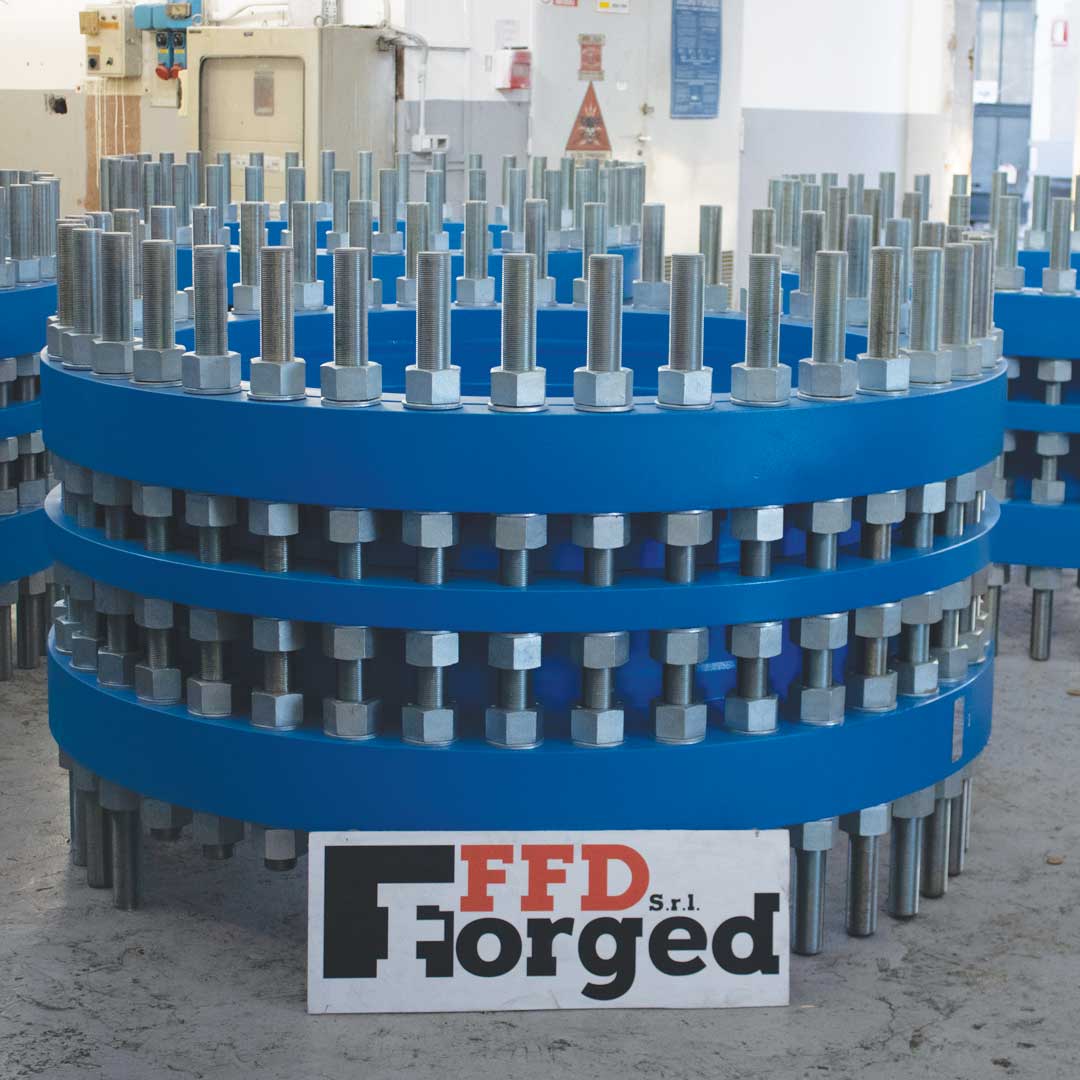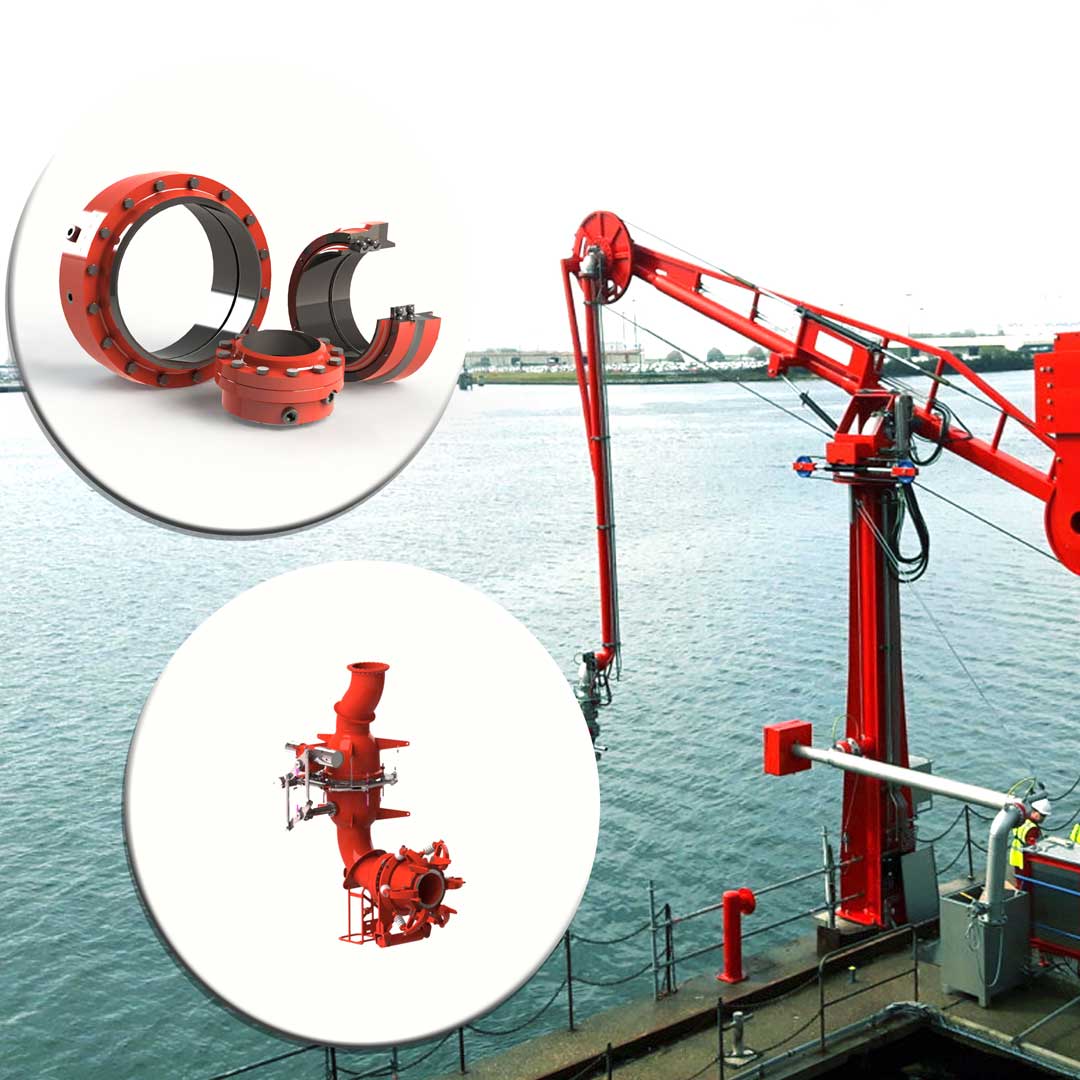
Flanges
Description
A flange is a disc or ring that attaches to the pipe with the purpose of providing extra support for strength, blocking off a pipeline or implementing the attachment of more items. A flange can be found also at the end of a valve or of a pipe.They are usually welded or screwed to the pipe end and are connected with bolts. Our flanges can be also customized, following customer’s requests or they can be manufactured according to international specifications.
There are many different flange standards such as ANSI, ASME, BS, DN. Many of the flanges in each standard are divided into pressure classes, allowing them to bear different pressure ratings; the most common pressure classes (ANSI/ASME) are 150#, 300#, 400#, 600#, 900#, 1500#, and 2500#. However, these classes do not correspond to maximum pressures in psi, which depends on the material of the flange and on temperature.
We produce flanges from ½” to 120“.
For example, the maximum pressure for a Class 150 flange is 285 psi, and for a Class 300 flange is 740 psi (both considering ASTM A105 Carbon Steel and temperatures below 100F).
Pipe flanges are manufactured in different materials like special steel, stainless steel, cast iron, aluminum, brass, bronze, plastic etc. but the most used material is a forged carbon steel, provided with a machined surface. The material of a flange is set during the pipe’s choice and in the most of the cases it is produced with the same material.
Technical Datasheet
- SIZE AVAILABLE:
- 1/2″ up to 120″
- PRESSURE RATINGS:
- 150lb up to 2500lb
- FLANGE FACINGS:
- Raised face, ring type joint
- Large tongue & groove, small tongue & groove
- Special items according to customer drawings
- DIMENSIONS:
- ASME B16.5
- ASME B16.47
- MSS SP44
- MATERIAL GRADES:
- ASTM A105 / ASTM A105 N / ASTM A 350LF2
- ASTM A350 A350, LF2, LF3
- A182 F304/L/H, F316/L/H, F321/H
- ASTM A694, ASTM A182
Forged FFD is a specialist in nickel based Alloys such as Monel, Inconel, Hastelloy, Duplex and other grades which provide excellent resistance to corrosion.


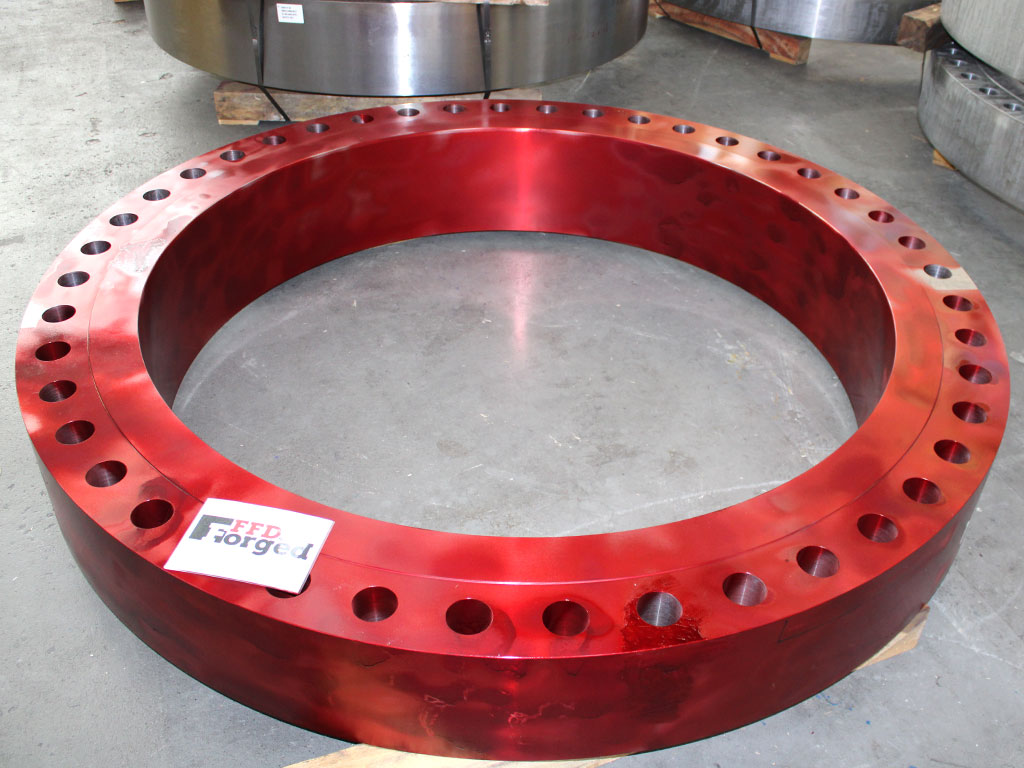

Most Used Flange Types
Welding Neck Flanges
Welding Neck Flanges are used in several applications involving high pressure, sub-zero and/or elevated temperatures.
They are commonly utilized every time it is necessary to branch pipes from a tank or a vessel.
These flanges are manufactured by welding the pipe to the neck of the flange. This allows the transfer of stress from the flange to the pipe itself.
They are made in Carbon, Alloy, Stainless steel, raised face or ring jointed. There is a difference between regular welding necks and long welding necks and that is, a longer neck makes much easier to weld the tank or the vessel body.
The thickness of the welding edge is calculated to reduce the effects of shrinkage after welding, which would otherwise be brought about due to the differences in the mass of metals to be welded.

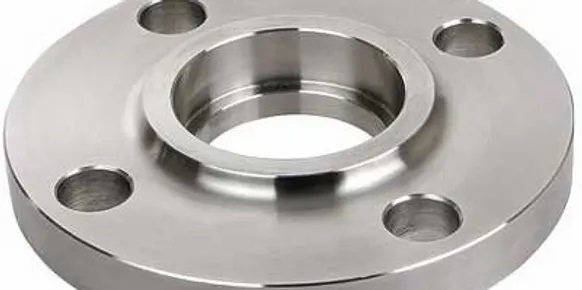
Socket Weld Flanges
Socket Weld Flanges were initially developed to serve on a small-size high-pressure piping.
These flanges are attached by inserting the pipe into the socket end and applying fillet weld around the top.
This allows a better flow of a gas or a fluid through the smooth bore, inside the pipe.
The static strength of socket weld flanges is similar to slip-on’s, but socket weld flanges have a higher resistance due to the presence of a single, instead of double, fillet weld.
Blind flanges
Blind Flanges are manufactured without a bore and they are used to blank off the ends of piping, valves and pressure vessel openings.
From the standpoint of internal pressure and bolt loading, blind flanges are the most highly stressed flange type.
They are commonly used for pressure testing of gasses and liquids’ flow through a pipe or vessel.
They also allow an easy access to the pipe when the work must be done inside the line.
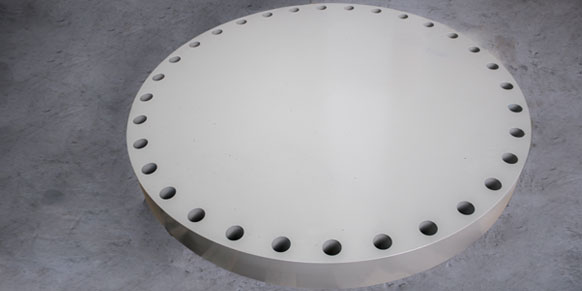
Surfaces
Our customized flanges can be manufactured with different surfaces. If not specified by the customer, the flange will be machined with a stock finish.
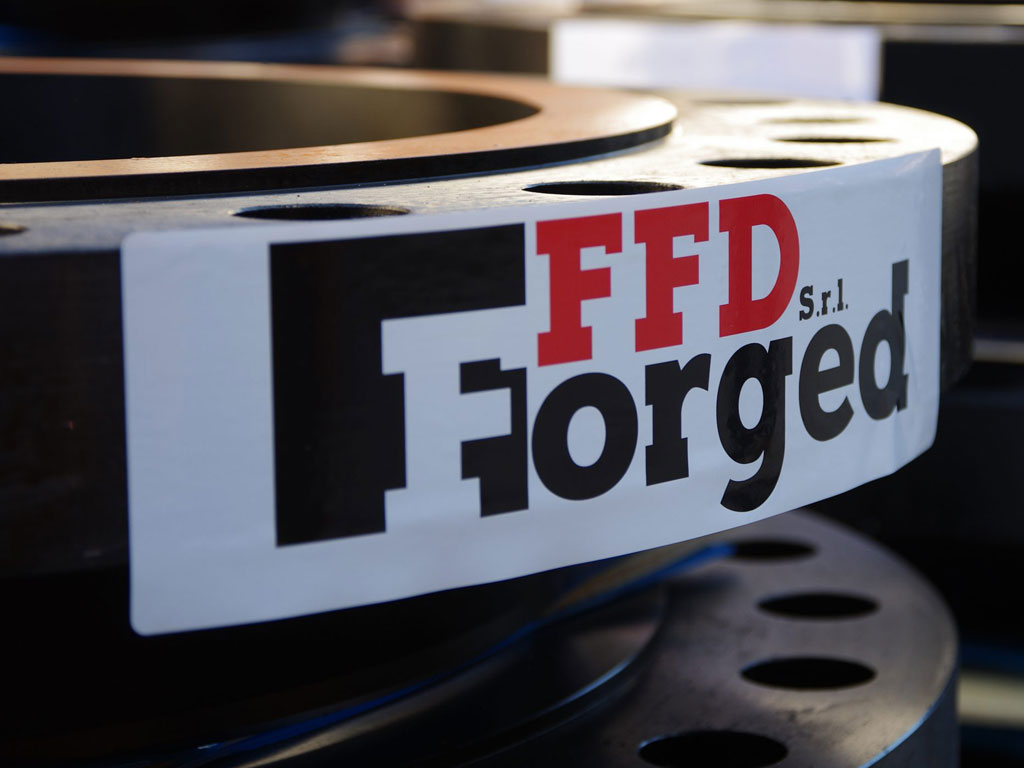
Stock Finish
This is the most widely used type of flange surface, because practically, it is suitable for all ordinary service conditions.
Under compression, the soft face from a gasket will embed into this finish, which helps to create a seal, and a high level of friction generated between the mating surfaces.
The finish for these flanges is generated by a 1.6 mm radius round-nosed tool at a feed rate of 0.8 mm per revolution up to 12 inch.
For sizes 14 inch and larger, the finish is made with 3.2 mm round-nosed tool at a feed of 1.2 mm per revolution
Spiral serrated or phonographic
This is also a continuous or phonographic spiral groove, but it differs from the stock finish in that the groove typically is generated using a 90-° tool which creates a “V” geometry with 45° angled serration
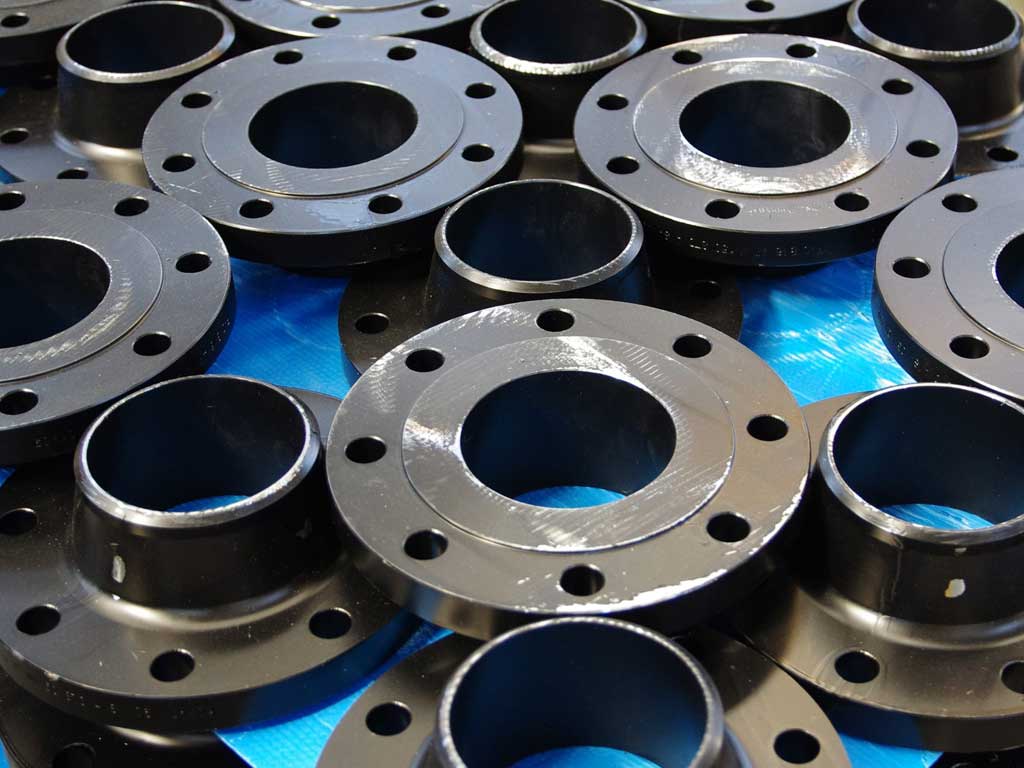
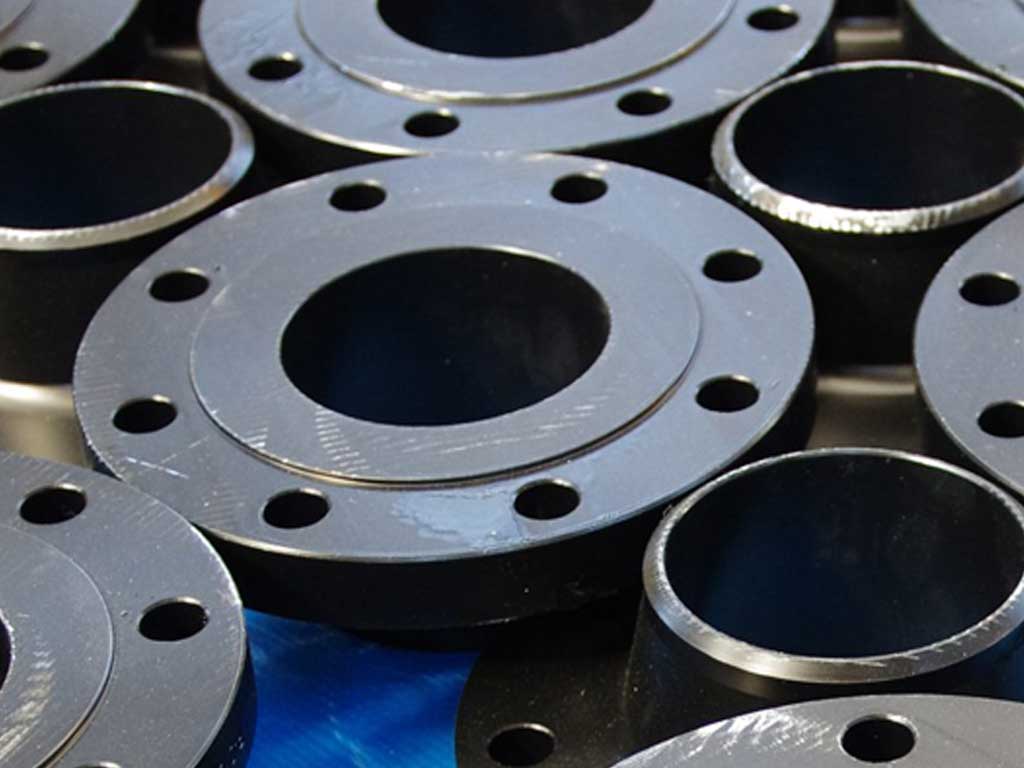
Concentric serrated
As the name suggests, this finish is comprised of concentric grooves.
A 90° tool is used here and the serrations are spaced evenly across the face.
Smooth finish
This finish shows no visually apparent tool markings. These finishes are typically utilized for gaskets with metal facings such as double jacketed, flat steel and corrugated metal.
The smooth surfaces create a seal which is effected by the flatness of the opposing faces. This is typically achieved by having the gasket contact surface formed by a continuous (sometimes called phonographic) spiral groove generated by a 0.8 mm radius round-nosed tool at a feed rate of 0.3 mm per revolution with a depth of 0.05 mm.
This will result in a roughness between Ra 3.2 and 6.3 micrometers (125 – 250 micro inch).


View the other products


